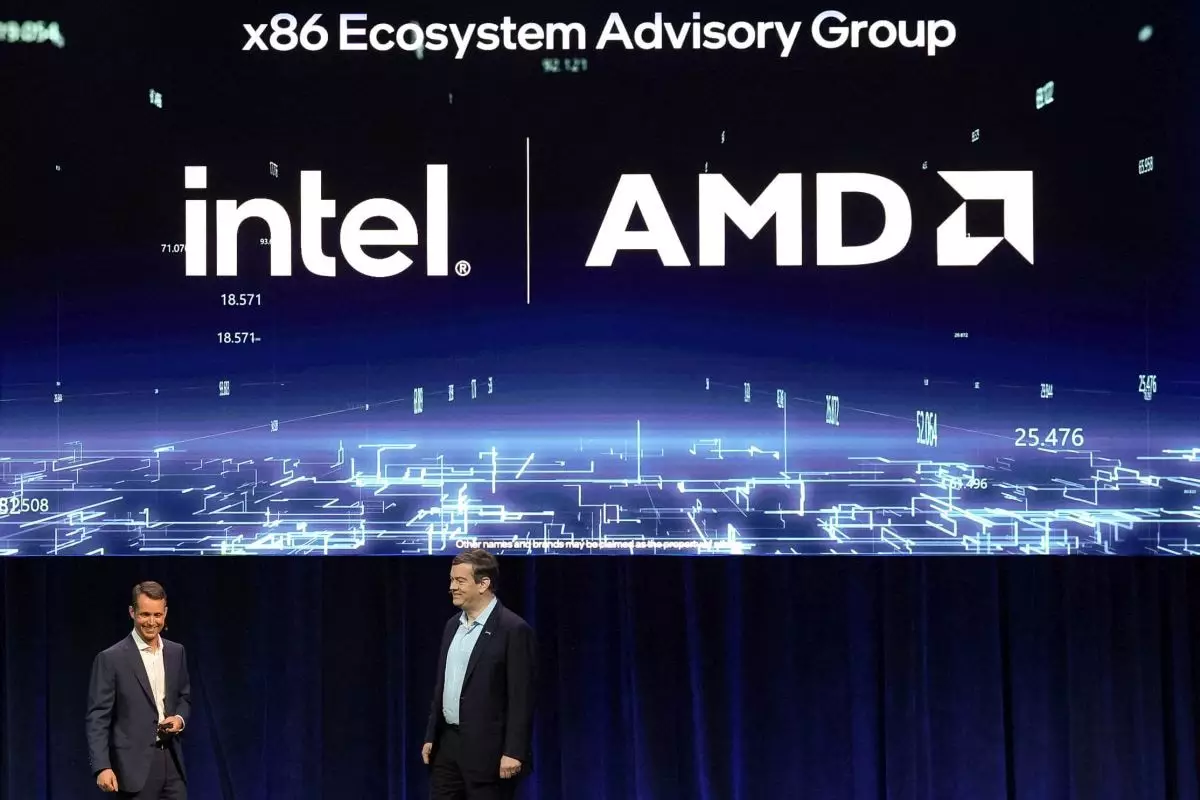The microprocessor industry has been defined by fierce rivalry between Intel and AMD for decades, with both companies historically dominating the x86 architecture landscape. Yet, the recent emergence and growing market share of Arm-based processors poses a significant challenge to their reign. Intel and AMD are not just passive observers in this changing landscape; in a groundbreaking move aimed at solidifying their position, both companies have announced the formation of the x86 Ecosystem Advisory Group. This initiative seeks to foster collaboration among various stakeholders in the industry, including prominent players like Microsoft, Google, and Dell, to strengthen the compatibility and functionality of x86 architectures in light of the rapid advancements made by Arm.
As we move into 2024, Arm-powered devices such as Apple’s M-series chips and Qualcomm’s Snapdragon X-series are rapidly gaining traction. Notably, the affordability of Arm-powered products, highlighted by the recent launch of the octa-core Snapdragon X Plus, emphasizes their appeal to consumers, especially with price points dipping below $800. This development has led to a marked shift in user preferences, prompting Intel and AMD to reassess their strategies and collaborate rather than compete.
The x86 Ecosystem Advisory Group aims to level the playing field against Arm’s growing influence by ensuring a cohesive software development environment for x86 processors. A primary objective is to develop a unified set of instructions and architectural interfaces, enabling software developers to create applications that perform seamlessly across all x86 platforms. This initiative is particularly important given the diverse hardware landscape and the fragmented software ecosystem that has characterized the x86 environment for years.
The establishment of this group comes at a pivotal moment as both companies have been losing ground in market share. By pooling resources and expertise, Intel, AMD, and their partners—including Linux kernel creators and other influential tech leaders—hope to breathe new life into the x86 architecture, making it an attractive option for future tech innovations. The increased cooperation signifies a willingness from both companies to shift focus from cutthroat competition to a more integrated approach that embraces collaboration.
For software developers, the establishment of the x86 Ecosystem Advisory Group could herald an era of streamlined development processes. Compatibility across various platforms and devices would significantly reduce the time and effort needed to ensure software works effectively with different x86 processors, ultimately enabling quicker innovations in applications and services. Additionally, the participation of influential figures like Linus Torvalds and Tim Sweeney indicates that the advisory group will have access to rich industry insights that can steer its efforts.
Moreover, for end users, enhanced compatibility promises to deliver improved performance and responsiveness across devices powered by x86 processors. This is particularly important as the lines between PCs, data centers, and embedded systems blur, necessitating a more adaptable and robust architecture that can scale according to emerging demands. Intel CEO Pat Gelsinger’s assertion that we are on the brink of significant changes in the x86 landscape emphasizes the group’s potential impact on future technology.
The collaboration between Intel and AMD also serves as a crucial response to the shifting dynamics of the semiconductor market. With Arm’s projected compound annual growth rate being an impressive 14.3% between 2024 and 2030, the x86 ecosystem must evolve to remain relevant. The advisory group represents a strategic visualization of how traditional rivals can unite over shared goals, particularly in an increasingly competitive market.
As the x86 Ecosystem Advisory Group begins to take shape, the tech community watches closely to see if this collaborative endeavor will translate into tangible improvements. If successful, it could redefine the landscape of processor architecture, ensuring that the x86 architecture not only survives but also thrives amid diverse challenges posed by emerging technologies.
Ultimately, the formation of the x86 Ecosystem Advisory Group signifies a fundamental shift in how technology companies can approach competition. By fostering collaboration, this initiative may pave the way for new innovations that can captivate developers and consumers alike, sustaining the x86 architecture long into the future.

Leave a Reply